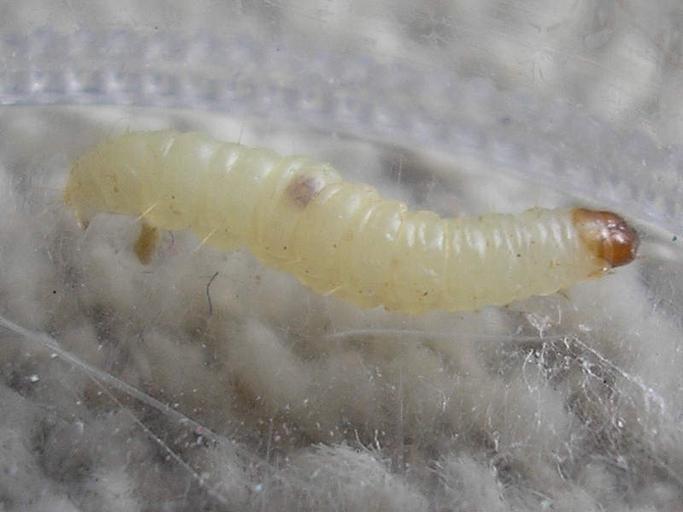Have you seen those small white worms on your kitchen ceiling? These pesky creatures may be tiny, but they can cause significant problems in your home. Those ‘worms’ you’ve encountered, however, are actually called Indian meal moths (most commonly known as pantry moths).
While these insects don’t pose a severe health risk to you and your family, they are certainly damaging to your pantry food. So, here’s everything you should know about worms on your kitchen ceiling and how to eradicate them once and for all.
Why are there worms on my kitchen ceiling?
So, those ‘worms’ on your kitchen ceiling are actually moth larvae. But why are they up there? The larvae that you see crawling around your kitchen are fully grown, and they are looking for a safe place to pupate so they can become adults. To become a moth, they creep upward, often ending up in the crevices of walls and ceilings where they create their cocoon. They climb up to high places as they need to feed on old spider webs and dead bugs – the central part of their diet.
Indian meal moth larvae thrive in warm, humid temperatures. Kitchens, with their regular infusions of heat and dampness, are perfect homes. As heat and damp will rise, they find your kitchen ceiling an inviting home.
Unfortunately, the larvae will not just stay on the ceiling, however. From your ceiling, these small, almost invisible insects may also work their way into your pantry. Fully hatched larvae lay their eggs in your stored food and infest cereal boxes and containers of grains, pasta, nuts, pet food, tea, and other dried goods. When an infestation occurs, all contaminated food should be disposed of.
How do I get rid of moth larvae on my ceiling?
If you’ve spotted small white worms on your kitchen ceiling, you need to take action right away, as these creatures can reproduce within three weeks and invade the rest of your pantry.
Here are some tips on how you can get rid of these pests:
Check your food
First thing’s first: get a trash bag. Then, check all the old and new items in your pantry. Inspect the packages’ folds, as larvae might be hiding here. Then, dispose of products you rarely use, as well as boxes and bags that have been at the back of the shelf for a long time or that have expired. Keep in mind that these worms burrow their way into unopened packages and even canned goods, so inspect them too. Then, remove and replace torn or peeling shelf liners.
Once all discarded items are in the trash bag, get it out of your house fast! Don’t store the bag in your garage or basement while you wait for the next trash pickup schedule. And definitely do not empty anything into your compost or wormery! Take them to the garbage cans far away from your place right away.
Deep clean your pantry
Clean your pantry like you never did before! First, empty your storage. Then, vacuum your cabinets or racks to remove any debris. Take a soapy sponge and scrub every inch of your pantry. If you have removable shelves, take them out and wipe them clean. Those small white worms may have wedged themselves behind the wood.
If you don’t have removable slats, still ensure that soapy liquid reaches all spaces where the shelves meet the walls. Repeat this process before rinsing the cabinets and letting them dry. After these steps, thoroughly mop floors and every surface in your pantry.
Set up traps
Pheromone traps emit a scent that attracts male moths, and once they land on it, they will get stuck, unable to fertilize female moths. These traps are widely available online and in hardware, gardening, and home-supply shops. Place them in areas where you have seen the pests or in spots where there are high-risk items that you want to protect.
Invest in plastic containers (optional)
Get some premium quality, waterproof, plastic, storage boxes. To check its quality, fill it up with water, seal its lid, flip it upside down, and shake it. If no water escapes, then you have found a reliable storage box. If there’s even the slightest gap in the container, don’t use it as it’s enough for the larvae to crawl in.
Where to get more help with worms on your kitchen ceiling
A moth infestation can be a costly problem if left untreated, as it can develop rapidly. The worms’ numbers increase quickly, and they can also spread into almost any space. So, if you find small white worms on your kitchen ceiling or anywhere in your house, make sure to act right away and follow the above steps.
But if the problem persists and becomes something worse, contact the most reputable pest control service provider in your area. These professionals have the right equipment, experience, and know-how to treat shelves and other places where any new larvae may hatch.


